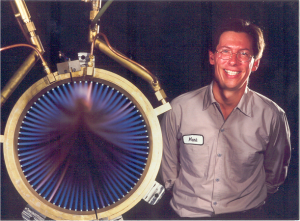Cracking The Heat/Quench Cycle

Having been around the block a few times, we at FTSI have seen all sorts of quality problems with various customer’s existing heat treating solutions, which we are then asked to solve. One of the biggest problems that we see involves cracking. Improper heat treating – which includes the quench cycle – can compromise the integrity of your part and cause it to break apart, either during quality control or after it’s deployed in the field. It’s one of the nastier quality control issues a heat treating line deals with.
And it’s surprising actually that cracking continues to plague some production lines because the industry really has developed some fairly straightforward methods to eliminate it. The two usual saboteurs of quality are also the biggest obstacles to eliminating cracking: wanting it done too fast or wanting it done too cheap. Beware of falling victim to these two temptations!
Cracks develop due to stresses created under the heat/quench cycle, and this is the key point: the heat/quench cycle that is most appropriate to your type of material, and the size of the actual hardening area. The faster you cool some types of steel, and the faster you heat cast iron, the more you risk cracking. As they say, timing is everything.
For example, materials that do well with faster cooling cycles such as 1045 (straight carbon steel), inherently reduce the tendency for cracks because “straight” carbon naturally cools faster without introducing instability. You are less likely to make a mistake, in other words. However alloy steels (4140, for example) need a slower rate of cooling during quench. Alloy slows down the rate of cooling so if you’re not paying attention it’s easier to cool the part too fast for the alloy to handle and thereby introduce instability into the part. That’s why we like to say around here: “it’s not just the heat, it’s the cool.” The heating mechanisms get all the glory but don’t forget that the quench has just as much to do with the end result. Future blogs will focus exclusively on quench and how polymer quenches help reduce cracking problems, so look for those.
(As an aside to our beginner readers: the last two numbers of a steel designation tell you how many points of carbon are in the steel, which indicates the hardness level you can get. A general rule of thumb we use is to add around 15 to those numbers to estimate your hardness levels. We’ve seen 1045 get as hard as 62 Rockwell; with 1018 you’re looking at about 30-35.)
With cast iron parts, it isn’t so much “the cool” as it is the heat. Cast iron needs a slow cycle of heating or it too can develop the instability that leads to cracking. How do you know what’s too fast and what’s too slow? How do you start to troubleshoot a cracking problem in your line?
This is where experience probably pays the biggest dividend. Once you understand the properties of your materials now assess how large of an area you want to harden. Smaller areas heat up and cool down much more quickly than larger areas, and if you’ve been paying attention you should be saying to yourself, uh-oh, faster cooling could be a potential problem, particularly for the teeth on my small, 4140 gear, but not so much for my thirty-inch diameter 1045 crane wheel. Congratulations! Now you know it’s not just the heat, it’s the cool too.
Ridding yourself of cracking issues will involve trial and error, but now at least you know better where to start. Heat treating solutions: adjust your cooling cycles for steel and your heating for cast iron; test; document; you’ll get it right. So get out there and get cracking – uh, I mean, get rid of the cracking! Next blog we’ll discuss the very common problem of excessive distortion. If you want to ask me to cover a specific heat treating topic or anything related to flame hardening as well, email me at mark@flametreatingsystems.com or call 919-956-5208.
Happy heat treating!
B2: We want to know your opinion.






